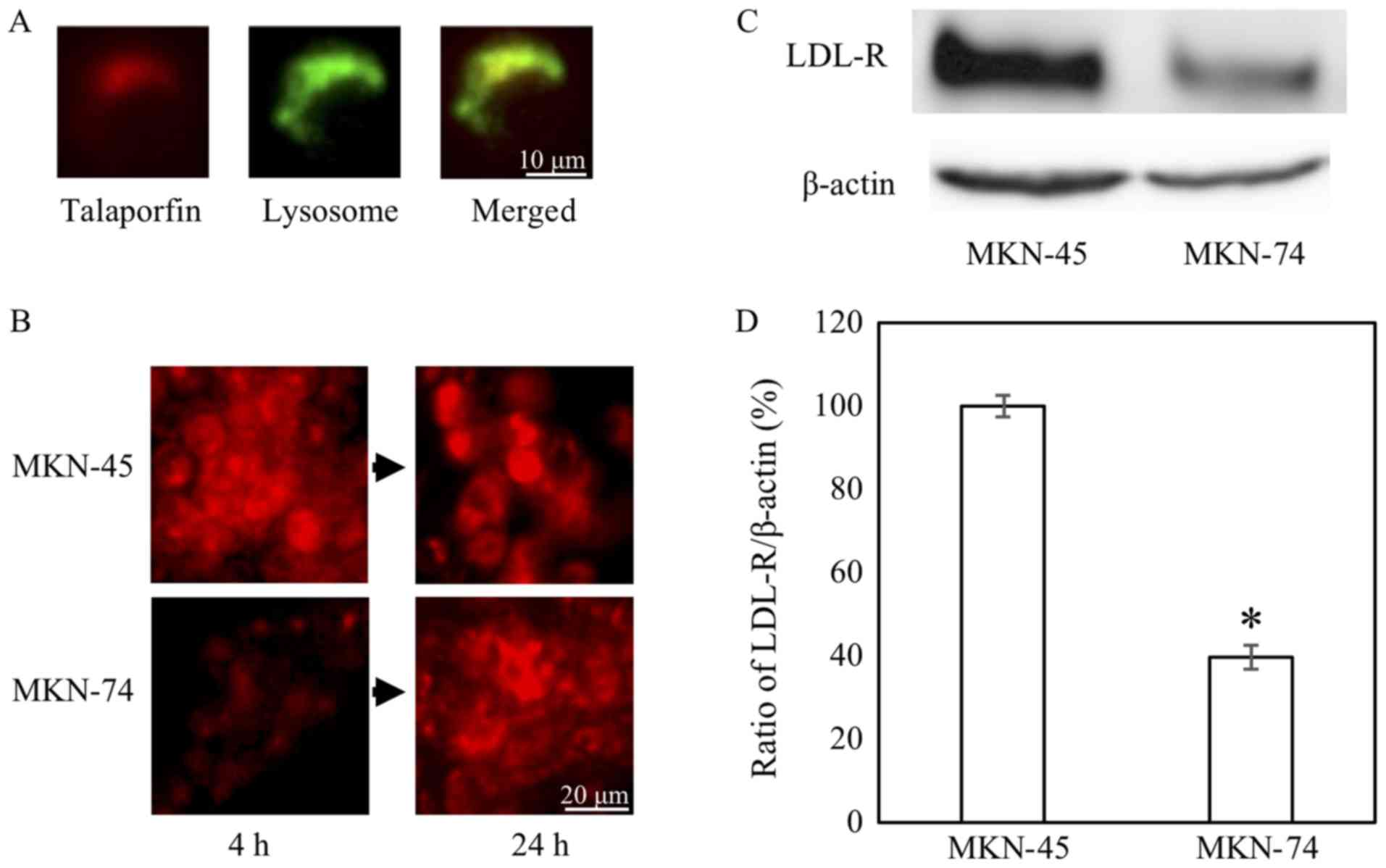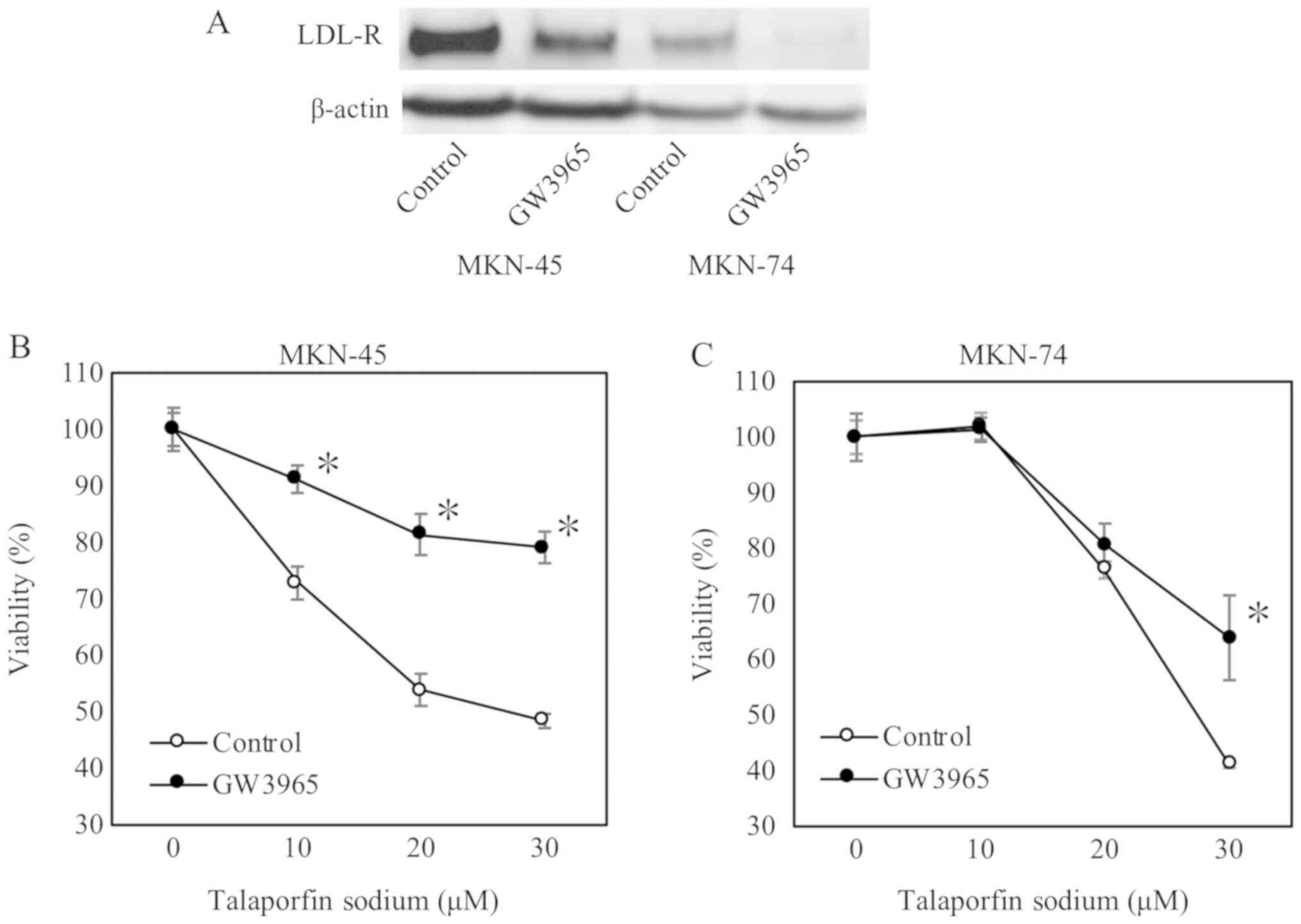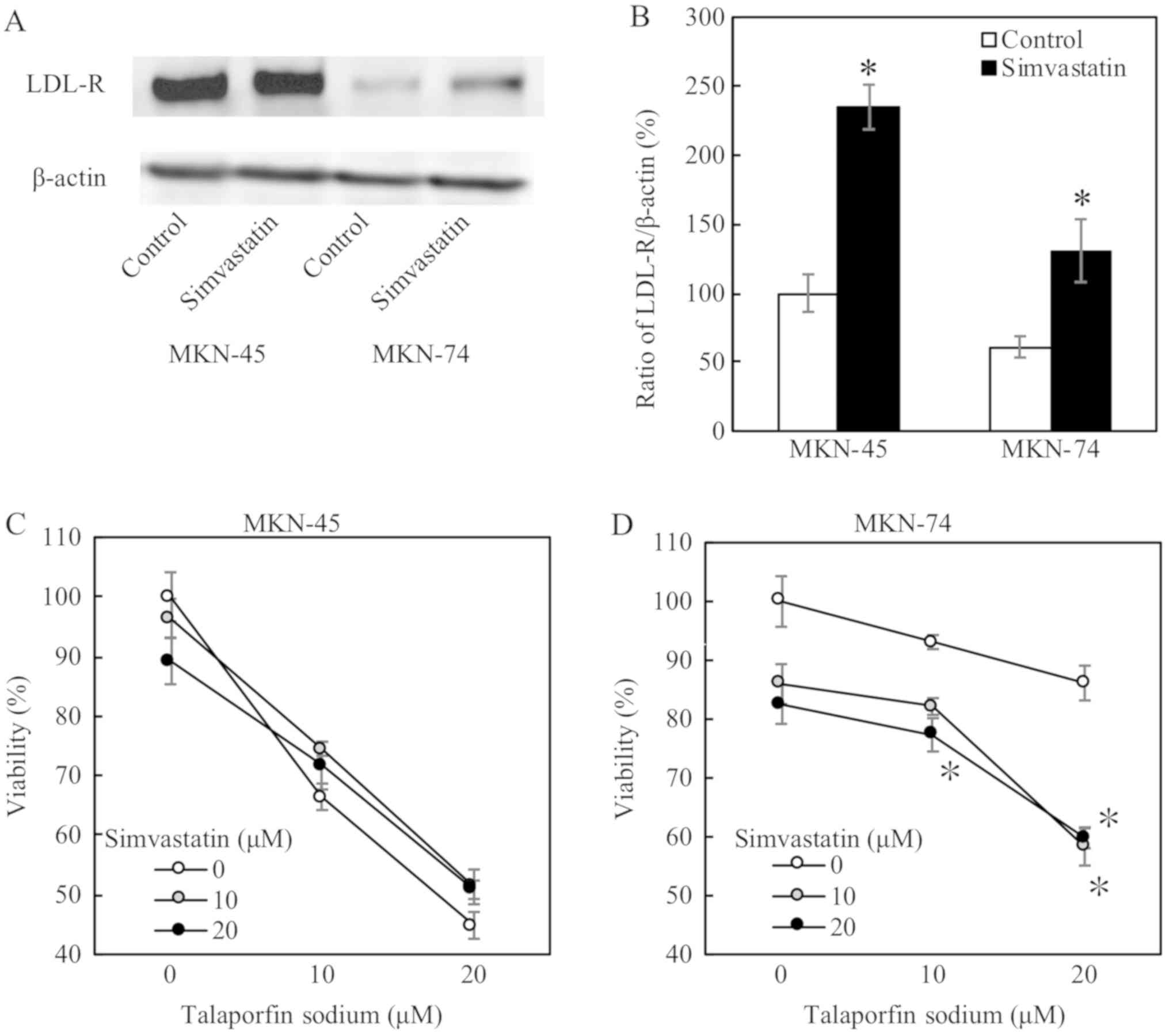Spandidos Publications style
Kanda T, Sugihara T, Takata T, Mae Y, Kinoshita H, Sakaguchi T, Hasegawa T, Kurumi H, Ikebuchi Y, Murakami T, Murakami T, et al: Low‑density lipoprotein receptor expression is involved in the beneficial effect of photodynamic therapy using talaporfin sodium on gastric cancer cells. Oncol Lett 17: 3261-3266, 2019.
APA
Kanda, T., Sugihara, T., Takata, T., Mae, Y., Kinoshita, H., Sakaguchi, T. ... Isomoto, H. (2019). Low‑density lipoprotein receptor expression is involved in the beneficial effect of photodynamic therapy using talaporfin sodium on gastric cancer cells. Oncology Letters, 17, 3261-3266. https://doi.org/10.3892/ol.2019.10004
MLA
Kanda, T., Sugihara, T., Takata, T., Mae, Y., Kinoshita, H., Sakaguchi, T., Hasegawa, T., Kurumi, H., Ikebuchi, Y., Murakami, T., Isomoto, H."Low‑density lipoprotein receptor expression is involved in the beneficial effect of photodynamic therapy using talaporfin sodium on gastric cancer cells". Oncology Letters 17.3 (2019): 3261-3266.
Chicago
Kanda, T., Sugihara, T., Takata, T., Mae, Y., Kinoshita, H., Sakaguchi, T., Hasegawa, T., Kurumi, H., Ikebuchi, Y., Murakami, T., Isomoto, H."Low‑density lipoprotein receptor expression is involved in the beneficial effect of photodynamic therapy using talaporfin sodium on gastric cancer cells". Oncology Letters 17, no. 3 (2019): 3261-3266. https://doi.org/10.3892/ol.2019.10004


















